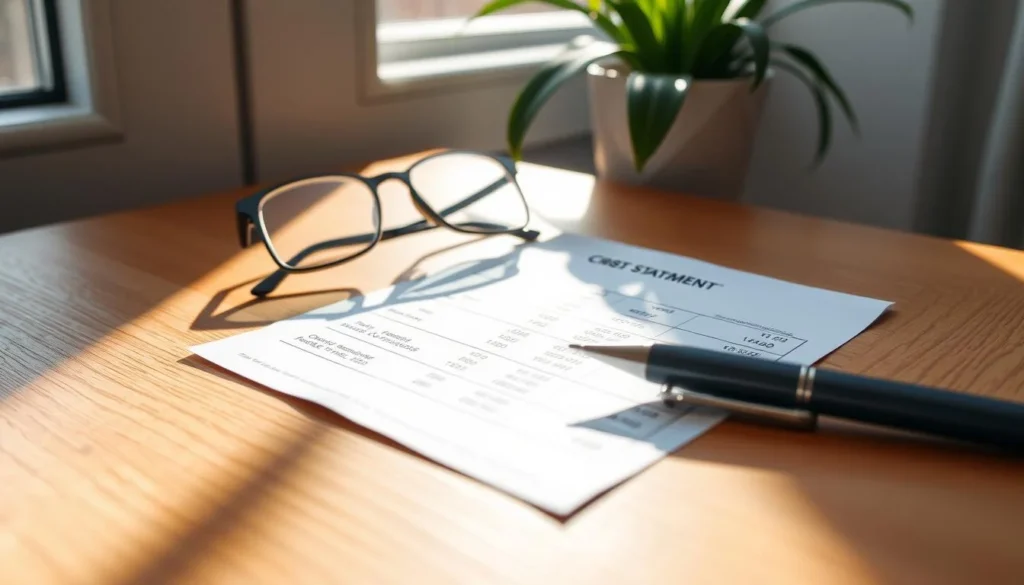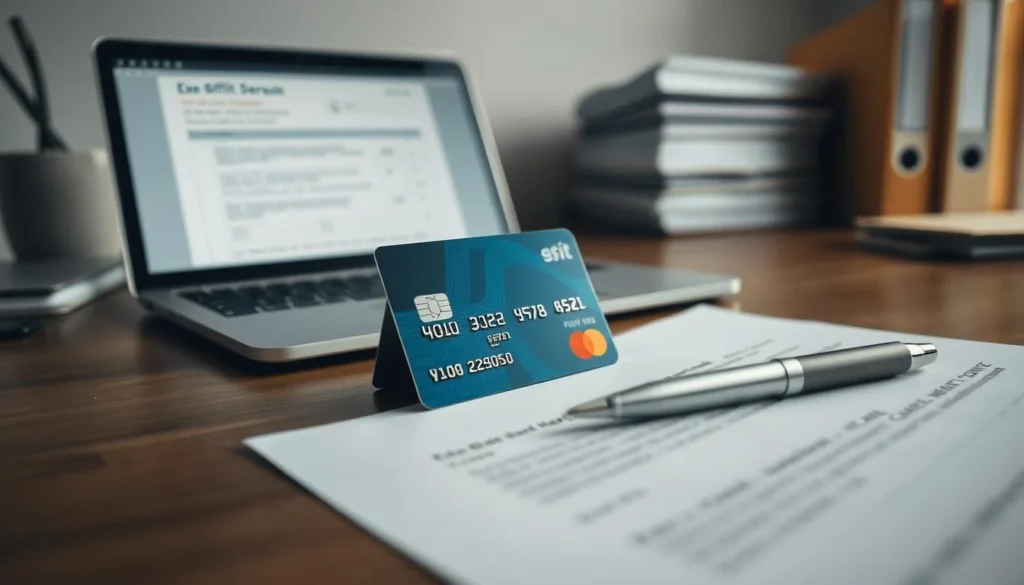Noticed a charge on your card you didn’t make—what should you do first?
You can dispute a charge if it looks wrong, unauthorized, or if you got charged twice. The Fair Credit Billing Act protects you. Banks like Chase and American Express have steps to help you.
Reasons to dispute include unauthorized charges, double charges, or wrong amounts. Also, if you didn’t cancel a subscription or didn’t get what you paid for. Always try to fix it with the seller first.
Report fraud to your card issuer right away. Check the time limits, usually 30 days. You can start the process online, by phone, or through the issuer’s dispute center.
Government sites like the Consumer Financial Protection Bureau can help with fraud. When you dispute, you might get a temporary credit. Or, if it’s in your favor, a permanent credit. Knowing these steps helps protect your account and credit.
Understand Why You Might Need To Dispute A Charge
You might see charges you didn’t okay. These could be from fraud or stolen card info. They’re big reasons to dispute a charge.
Maybe you bought something that never showed up. Or paid for services you didn’t get. Online stores often have disputes over missing items or wrong orders.
Double charges happen too. If a merchant bills you twice, you’ll see it on your statement.
Subscription surprises can also cause trouble. Trials turning into paid plans or forgotten fees can lead to disputes.
Unfamiliar names on your statement can be a red flag. Check the date, amount, and location before assuming a charge is wrong.
Authorized users or co-applicants might make purchases you didn’t know about. Talk to them before disputing charges.
Some charges change after you agree to them. Hotels and car rentals might hold money that settles for a different amount. Wait five to seven business days for final posting to avoid disputes.
For billing mistakes like wrong amounts or incomplete services, try to fix it with the merchant first. If they can’t help, contact your card issuer for help with online retailer disputes or other issues.
If your card is stolen, many issuers will cancel it and send a new one. Delivery times vary, but mobile wallet updates usually happen automatically.
You have legal rights under the Fair Credit Billing Act and state laws. The CFPB and FTC can help. IdentityTheft.gov offers steps for bigger identity-theft problems.
How To Review Your Account Before You Dispute

Start by looking at your credit card statement. Open your latest statement and check your online history. Note the date, amount, and who made the charge.
Pending transactions might take a week to show up. Check if the charge could change. Hotel and car rental holds often adjust later.
Collect all your receipts and emails about the charge. Make sure they match what’s on your statement.
Save proof for subscriptions and trial offers. Take screenshots of terms and any promises of refunds or cancellations.
Check if a charge looks strange. Use the internet to find out if it’s real. Often, charges show a company name you don’t expect.
Talk to others who might have made the charge. Check other cards linked to yours. Keep track of who you talked to.
Look for any changes in charges. Make sure you know the final amount. Keep shipping and return info handy.
Organize your evidence. Take screenshots of orders and messages. Make sure you know how it will affect your bill.
Dispute A Charge On Your Credit Card
If a charge seems off, start by talking to the merchant. Look for their phone number on your receipt. You can also email them or visit in person.
Trying to fix errors like double charges or wrong amounts often works. This is usually the first step.
Keep all records of your talks with merchants. Write down dates, times, names, and what you talked about. Save emails, chat logs, and receipts too.
These records help if you need to talk to your credit card company later.
If the merchant is closed or seems shady, don’t bother trying to fix it. Call your credit card’s fraud line to report an unauthorized charge. They can stop more charges and start an investigation.
Many banks let you file a digital inquiry online or through their app. Pick the transaction you want to dispute. Banks like CIBC and Scotiabank have special apps for this, but you need the right card.
When you file a dispute, add all your evidence. This includes receipts, contracts, and emails. Your bank might ask for more if it’s a big purchase.
If the merchant answers while you’re disputing, tell your bank right away. They’ll look at what the merchant says and your evidence. Ask if you can dispute a charge even if the merchant offers a partial refund.
Stay in touch with your bank and keep notes. You might need to fill out a form or answer a question. Being organized helps your bank solve your problem fast.
How To File A Credit Card Dispute: Step-by-Step Process

First, gather your evidence. Collect receipts, order confirmations, and refund notices. Also, keep email threads and screenshots that support your claim.
If you returned something, keep tracking numbers and carrier proof. This helps a lot in the billing dispute process.
Next, contact the merchant if needed. Call their customer support, use their chat, or send an email. Give them time to respond.
Many times, the merchant will refund you quickly. This means you might not have to officially dispute the charge on your credit card.
Then, use your issuer’s digital channels or call them. Log into online banking or open the app. Find the transaction and choose “Dispute this transaction.” Some cards need a special app or phone line for disputes.
Attach your documents when you submit the claim. Upload invoices, contracts, and proof of return. Clear evidence helps the issuer review your case faster.
It can also affect if you get temporary credit while they review.
Provide written notice if needed. If your card agreement asks for a billing error letter, send it to the creditor’s address. Use certified mail with return receipt for a dated record.
Follow the timelines closely. Issuers usually acknowledge receipt in about 30 days. They might finish the investigation in 90 days.
You might see a temporary credit while they investigate. If you win, they will post permanent credit to your account.
Know the chargeback process if the merchant won’t help. Your issuer can start a chargeback through the card network. The merchant might send evidence. Then, the network decides if to reverse the charge or deny the claim.
Keep making payments unless your issuer tells you not to. Make at least the minimum payment. This avoids late fees, interest increases, or negative reporting while the dispute is ongoing.
For fraud, call your card’s fraud line right away. Some cards from American Express, Mastercard, or Visa partners have special ways to file disputes. Check your card’s options before you start.
What Happens After You File A Dispute And How To Follow Up
After you file a dispute, your card issuer will send a notice within 30 days. This notice will tell you about the investigation and what to do next. Make sure to keep a copy of this notice and mark important dates.
The issuer will then look into the matter. They will check the merchant’s evidence and review the transactions. You might see a temporary credit on your statement while they work on it.
If the issuer finds in your favor, the temporary credit will become permanent. You will also get a notice saying your account has been corrected.
The merchant can either agree to the chargeback or contest it. Payment networks have rules for disputes and chargebacks. The issuer will look at both sides before making a decision.
Most disputes are solved within 90 days. But sometimes, it takes longer. You might get a full credit, a denial, or a partial resolution. If denied, you will get instructions on how to appeal and provide more evidence.
Keep making payments while your dispute is being looked into. Stopping payments can lead to collections or a delinquent account. If you can’t pay, talk to your issuer about temporary arrangements.
If the dispute is not solved and you stop paying, your credit score can drop. You can fix any mistakes in your credit report through Equifax, Experian, and TransUnion. Save all emails, receipts, and notes to support your case.
If the issuer says no, you can appeal with new evidence. You can also ask the issuer to reopen your case. You can also file a complaint with the CFPB or your state’s consumer protection agency.
Keep an eye on your dispute status online. Log all your communications. Update your automatic payments if you get a new card for fraud. Keep all settlement and correction notices for later use.
Conclusion
To dispute a charge on your credit card, first check your statement. Look for the merchant name, date, and any users. Then, try to contact the merchant first.
Collect receipts, emails, and screenshots before you file with your issuer. You can file online or by phone. Keep track of your case.
Know how long it takes for issuers to act. They usually respond in 30 days and may take up to 90 days to investigate. Remember, you have federal protections like the Fair Credit Billing Act.
Always make at least the minimum payment unless told not to. This helps avoid extra interest and bad credit reports. If you’re not happy with the outcome, appeal to your issuer.
Also, you can file a complaint with the Consumer Financial Protection Bureau or Federal Trade Commission. Dispute any wrong entries with the big three credit bureaus: Equifax, Experian, and TransUnion.
Keep good records of your transactions and talks. Act quickly if you think something is wrong. Use your issuer’s dispute centers or fraud hotlines to start the process.
These tips will help you deal with credit card disputes. They can help you avoid extra costs and fix problems with your credit card or debit card.
